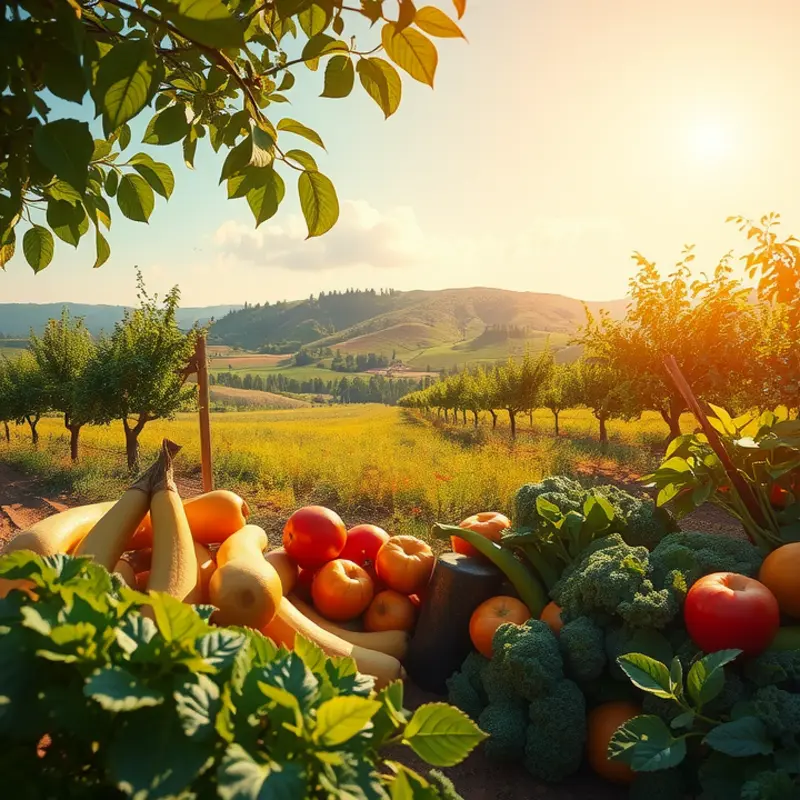As environmental concerns rise, many individuals seek ways to reduce their carbon footprint at home, especially in the kitchen. Adopting low-carbon cooking techniques not only supports eco-friendly practices but also enhances culinary enjoyment. By integrating simple methods into daily meal preparation, you can significantly impact the planet without sacrificing flavor or nutrition. This guide empowers you to embrace cooking choices that are both satisfying and sustainable.
Harnessing the Power of Energy-Efficient Appliances

Adopting energy-efficient appliances in our kitchens is a pivotal step towards embracing eco-friendly gastronomy. Understanding how to choose and operate these devices can dramatically reduce energy consumption while maintaining culinary excellence. Among the most efficient options available today are induction cooktops, slow cookers, and microwaves, each offering unique advantages over traditional cooking methods.
Induction Cooktops: These appliances use electromagnetic energy to directly heat pots and pans, making them incredibly efficient compared to conventional stovetops. Induction cooktops deliver heat quickly and with precision, allowing for precise temperature control without energy wastage. Moreover, they remain cool to the touch, ensuring safety while also reducing kitchen heat, consequently lowering the need for additional air conditioning energy.
Slow Cookers: Slow cookers are a versatile option for low-energy cooking, perfect for meals that require long, gentle simmering. By drawing minimal electricity over extended periods, they can prepare delicious dishes without the substantial energy draw of an oven. Additionally, slow cookers trap moisture and heat, preserving the nutrients and flavors of ingredients, enhancing both the quality and sustainability of home-cooked meals.
Microwaves: Often overlooked, microwaves are astonishingly energy-efficient for cooking and reheating. They use significantly less power than conventional ovens, especially when heating small portions or defrosting frozen items. Utilizing a microwave for quick meals can cut down on energy use significantly, making it a smart choice for everyday cooking tasks.
Beyond selecting efficient appliances, adopting certain cooking practices can further optimize energy use. Cooking in bulk is an excellent strategy, which involves preparing large quantities of food at once and storing for later use. This approach not only saves time throughout the week but also consolidates energy use into one cooking session, reducing overall consumption and kitchen emissions.
Meal Prepping for Efficiency
Meal prepping aligns perfectly with this concept. Through thoughtful planning, it involves preparing ingredients or full meals ahead of time, often over the weekend for the week ahead. This practice can minimize the frequent reheating and cooking of ingredients, effectively lowering the kitchen’s carbon footprint. For tips on efficient meal prepping, including preparing ingredients in practical batches, visit this practical ingredient batching guide.
Incorporating energy-efficient appliances and practices transforms the kitchen into a hub of sustainability. This shift not only supports the environment but also creates a space where culinary creativity thrives without ecological compromise.
Creative Cooking Methods for Sustainable Meals

Embracing sustainable cooking techniques not only enhances the taste of your meals but also contributes to a healthier planet. Among various methods to achieve this, steaming stands out as an iconic technique that preserves nutrients and flavors. By using minimal water, steaming helps maintain the natural taste of vegetables and reduces the need for excessive seasoning. This method shines when applied to fresh, local produce, known for both its reduced environmental impact and superior freshness.
Grilling is another excellent technique to explore when aiming to create flavorful dishes with a low-carbon footprint. It requires little to no added fats, allowing the natural flavors of the ingredients to be the highlight. Using a grill can also impart a delightful smoky taste to vegetables and plant-based proteins, such as tofu or seitan. Opting for vegetable-based meals instead of meats dramatically reduces individual carbon emissions. To enhance flavors without relying on salt, consider additional flavor boosters.
The pressure cooker is a versatile tool that modern sustainable kitchens can hardly do without. It significantly reduces cooking time, leading to energy savings. This method is particularly beneficial for preparing legumes and grains, which are cornerstones of a plant-based diet. Legumes, such as lentils and chickpeas, are not only nutritious but are also lower in greenhouse gas emissions compared to animal products. Pair these with seasonally available vegetables to create wholesome, satisfying meals. Seasonal ingredients often travel shorter distances to reach your kitchen, therefore conserving fuel and reducing pollution.
Incorporating plant-based ingredients isn’t just about choosing the right cooking techniques; it’s also about selecting locally sourced produce whenever possible. This practice supports local farmers and reduces the environmental cost associated with transporting goods over long distances. To maximize the benefits of these ingredients, plan your meals around what is locally and seasonally available. This not only ensures premium quality and taste but also supports biodiversity and local agriculture.
Reducing food waste is a pivotal component of a sustainable kitchen. Utilize leftovers creatively by repurposing them into new meals. For instance, yesterday’s roasted vegetables can become today’s hearty sandwich filling or the topping for a savory grain bowl. Composting food scraps and reusing vegetable stocks can further minimize waste.
To align with eco-friendly practices, aim to use storage techniques that prolong the life of your fresh ingredients, preventing spoilage and unnecessary waste. Consider reading more about eco-smart kitchen storage to understand how to store food effectively.
Making these thoughtful choices in your culinary habits not only contributes to personal health but also fosters global sustainability. By understanding and integrating these creative cooking methods, you transform your kitchen into an eco-warrior’s haven, capable of producing delicious, sustainable meals.
Final words
Embracing low-carbon cooking techniques allows you to enjoy delicious meals while playing a significant role in protecting the environment. By investing in energy-efficient appliances and adopting sustainable cooking methods, you reduce energy consumption and food waste, contributing to a healthier planet. Making mindful choices about ingredients can further lower your carbon footprint and enhance your culinary experience. Remember, every small change in the kitchen makes a difference. Start implementing these techniques and inspire others to join the journey toward a more sustainable lifestyle. Your cooking can pave the way for a greener future.








